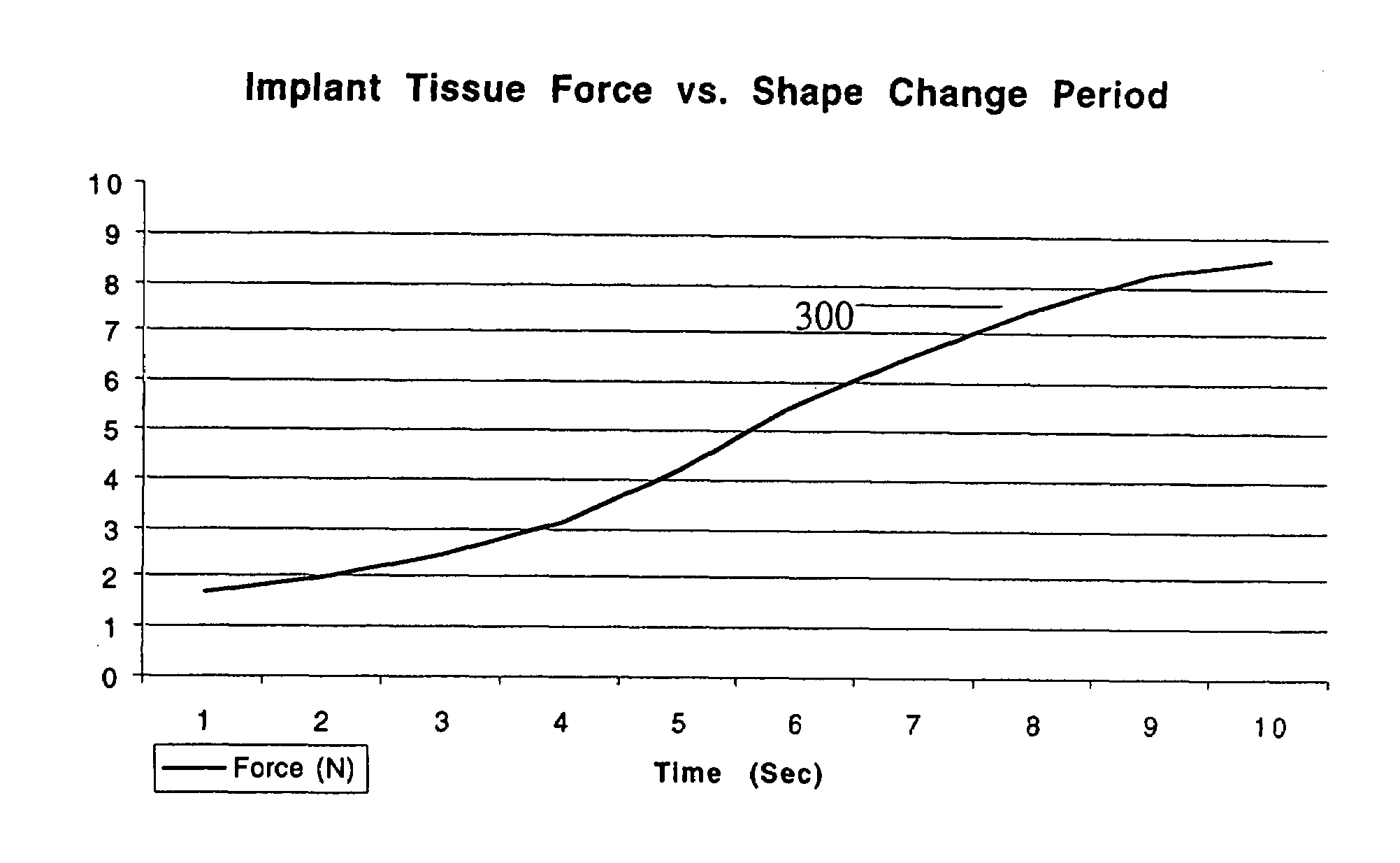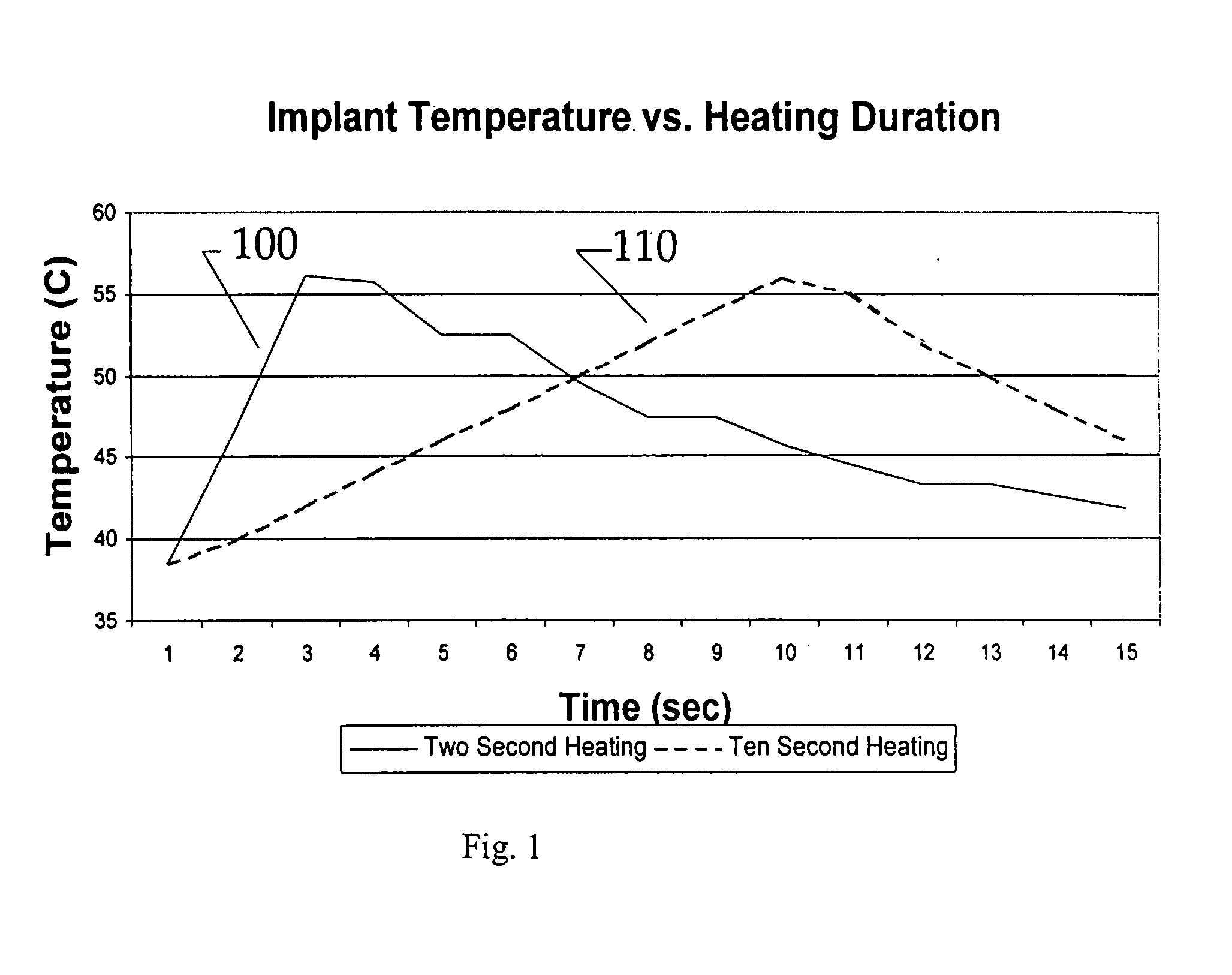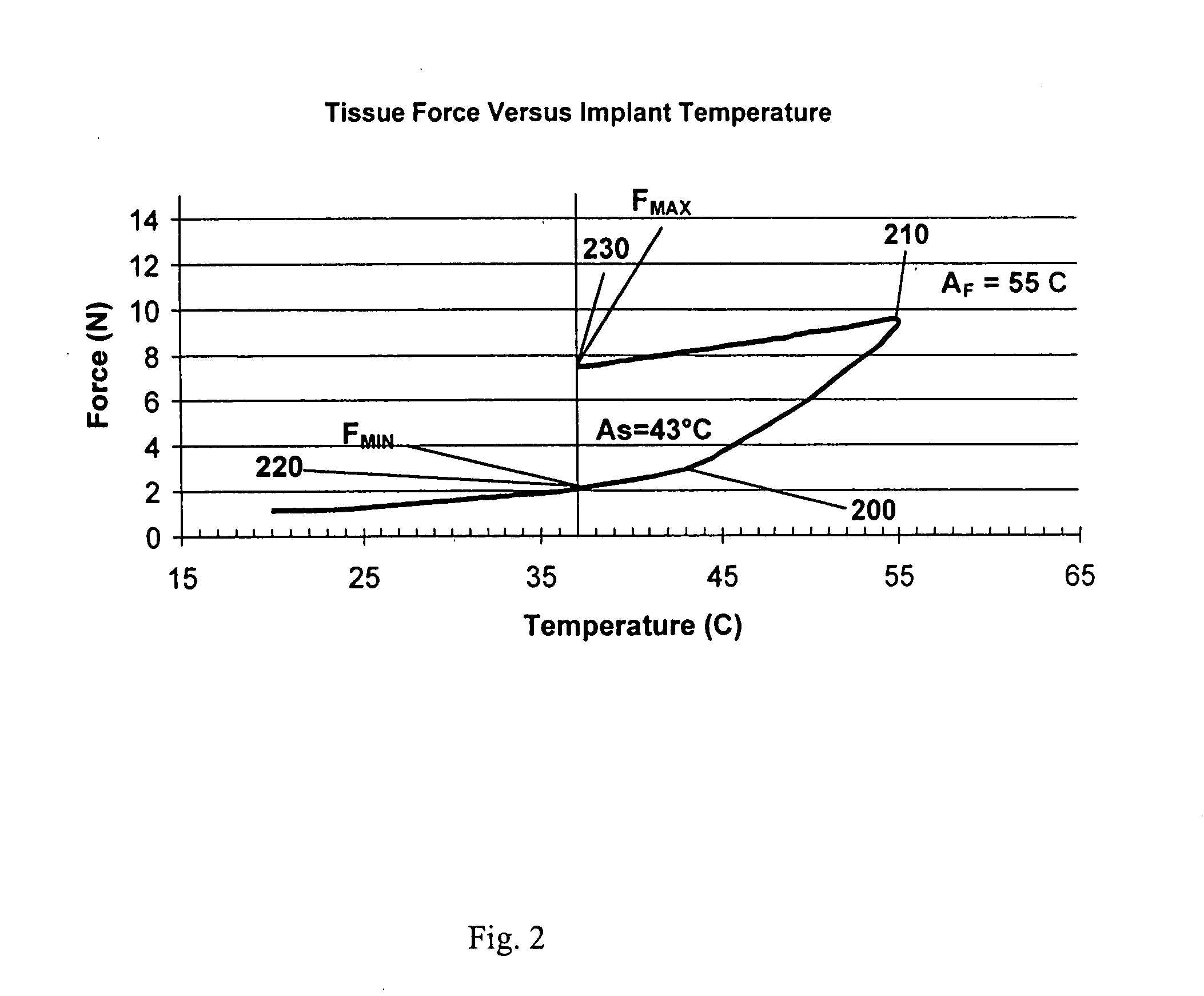System and method for force, displacement, and rate control of shaped memory material implants
a memory material and rate control technology, applied in the field of system and method for force, displacement, and rate control of shaped memory material implants, can solve the problems of implant applying the maximum potential force to the surrounding tissue, need for the control of the rate, and the shape change of the memory metal implant, etc., to achieve the effect of facilitating fusion, not causing impingement of the spinal cord, and controlling the rate of memory metal shape chang
- Summary
- Abstract
- Description
- Claims
- Application Information
AI Technical Summary
Benefits of technology
Problems solved by technology
Method used
Image
Examples
Embodiment Construction
[0105]The preferred embodiment of the invention consists of an electronic control console that operates using a lookup table, algorithm or mathematical model to control the temperature of a memory alloy implant in such a manner so as to control the extent of its transformation from a martensitic to austenitic microstructure. The rate of heat application controls the rate of implant shape change (FIG. 1). Rapid heating curves (100) and slow controlled heating curves (110) both can provide sufficient heat energy to fully convert the material's phase and shape. The magnitude of heat transferred controls the state-of-the-metal's phase change thus the force exerted on surrounding tissue (FIG. 2). Force and temperature relationships exist for each shape-changing element of an implant. In an implant restrained in bone the force exerted by the implant increases with temperature. The tissue force begins at or near the austinetic start temperature [As] (200) and increases until the austinetic...
PUM
 Login to View More
Login to View More Abstract
Description
Claims
Application Information
 Login to View More
Login to View More - R&D
- Intellectual Property
- Life Sciences
- Materials
- Tech Scout
- Unparalleled Data Quality
- Higher Quality Content
- 60% Fewer Hallucinations
Browse by: Latest US Patents, China's latest patents, Technical Efficacy Thesaurus, Application Domain, Technology Topic, Popular Technical Reports.
© 2025 PatSnap. All rights reserved.Legal|Privacy policy|Modern Slavery Act Transparency Statement|Sitemap|About US| Contact US: help@patsnap.com



